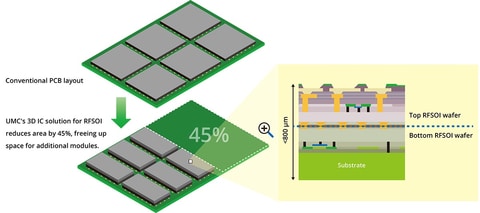//php echo do_shortcode(‘[responsivevoice_button voice=”US English Male” buttontext=”Listen to Post”]’) ?>
When NASA’s Boeing-made Starliner spacecraft returns to earth from its first manned flight, which is expected this spring, the recovery crew on the ground will be using SafeGuard health and safety monitoring technology from Sentinel Occupational Safety, an Ohio startup. The SafeGuard tech stack, which can include flexible hybrid electronics (FHE), detects factors like core body temperature and harmful gases like carbon monoxide.
To expand its portfolio of products for use in harsh or dangerous environments, the company received funding from the Department of Defense (DoD)-sponsored institute NextFlex, which is part of Manufacturing USA. Sentinel is using the money to pursue intrinsic safety certification for a new technology tentatively called AirGuardian—in a project titled, “Safety assessments of FHE and enhancements for tough environments,” or SAFE-TE.

“The purpose of our SAFE-TE project is to get certification that would allow you to take AirGuardian into an explosive environment,” Sentinel CEO Zach Kiehl told EE Times in an exclusive interview. “[AirGuardian] is a prototype that works well. But we still have a few boxes to check where we could actually go expose it to toxic environments that could have explosive gases.”
NextFlex, a membership institute whose mission is to work with companies like Sentinel to advance FHE development and manufacturing in the United States, has issued its most recent call for projects. The project call is funded with $4.4 million in DoD money—an amount which is expected to grow to an estimated $9.4 million in value with the participants’ matches. The deadline for proposals is May 11, but a required cover sheet detailing the applicant’s name, a general idea of their project and amount of funding requested is due May 4.
“[The cover sheet] is more for our logistics to understand how many proposals we’re going to receive and coordinate reviewers on our side and have an ample time to do that,” Nick Morris, NextFlex’s FHE technologies manager, told EE Times in an exclusive interview.
The institute has also issued new roadmaps for manufacturing FHE and for FHE technology platforms.

Seeking new project leaders
Under the project call, business, academic and government entities can submit proposals for projects that align with NextFlex’s member-determined goals. The current funding round falls into three categories related to FHE:
- Advancing their complexity and performance: “We’re looking to push into new environments and higher performance in more austere environments, [such as] space applications and high-temperature applications,” Morris said.
- Proving their reliability: “It could be a DoD application, but it could be a consumer automotive application,” he said. “They’re looking to integrate FHE and automotive platforms that have very high requirements and reliability standards. That’s a key area that needs development.”
- Demonstrating their environmental sustainability: “We’ve heard from our members over the last several years a lot more interest in understanding how FHE can improve the environmental sustainability of electronics manufacturing,” Morris said.
Those interested in submitting a proposal need not be a NextFlex member, but membership is required to receive funding. Funded projects require a minimum one-to-one dollar match.
The institute is encouraging new project leaders, too.
“This is a very direct opportunity for participants who have not led projects previously… [to] not have to worry about competing against teams that have been through this several times in the past,” Scott Miller, NextFlex’s director of technology, told EE Times. “I’ve worked out a formula that seems to be fairly successful to make sure that we’re always bringing new participants into the projects.”

Roadmaps point way to FHE development
The 11 roadmaps are available on NextFlex’s website in a one-page version for the public. Members have access to a more detailed version that can provide an understanding of how technologies can transition from research to manufacturing of products for the marketplace. Each contains a five-year plan that details how NextFlex and its members aim to fill gaps in FHE development. The gaps are then translated into project calls.
“We’re deeply focused on how to advance the manufacturing technology to benefit our DoD partners, but also commercially bolster the domestic capability for FHE manufacturing,” Morris said.
The roadmaps are developed by technical working groups made up of institute members like Sentinel.
“It’s really taken the whole ecosystem, the whole community’s perspective on what needs to be developed and where the direction of the technology is,” he said. “We formalize it into the roadmaps and share that with the members. Those shape the project calls to help fund the advancements in those areas.”
Funding not the sole NextFlex perk
Sentinel, with 10 employees, has made contacts with the likes of the Air Force Research Laboratory, Boeing, the DoD, DuPont, Lockheed Martin, UES and W.L. Gore through its NextFlex membership. In its SAFE-TE project, partners include Aptima, Binghamton University, F2Labs, GE, Infinite Corridor Technology, Molex and NextFlex’s FHE fab.
Kiehl said he has not only made connections with partners and suppliers, but also found customers through his membership.
“The only thing I don’t think we’ve found yet was an investor, though we did have a conversation or two with some investors that were connected to the community,” he said. “But honestly, it’s really been a godsend as far as a small business like ours trying to develop and commercialize new technologies.






